Soil & Health Workbook
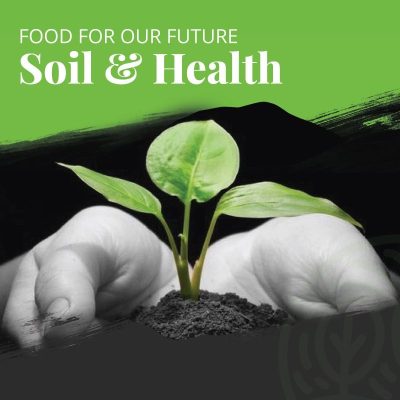
This is a Human Ecology Project Soil & Health Workbook
We hope you can find a group of friends and watch the video together and discuss the issues presented in it.
We have supplied some questions in the workbook to get the ball rolling if you need them, and supplied a full text of the video with references to some studies and articles if you want to carry your studies deeper.
We believe that soil quality, use and preservation is a fundamental issue in creating a sustainable environment. How we treat the soil is a direct reflection of the choices we make when we buy food for ourselves and our families.
Remember: The Personal Is Planetary.
In good health

Let's Keep Fish In The Sea Workbook
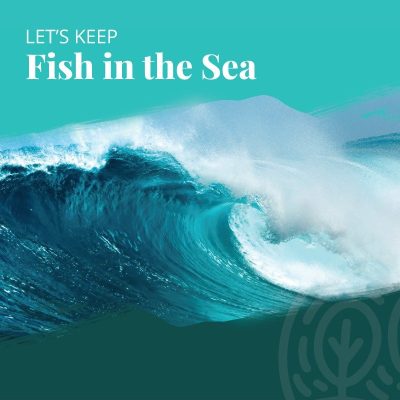
This is a Human Ecology Project, Let's Keep Fish in the Sea Workbook
We hope you can find a group of friends and watch the video together and discuss the issues presented in it.
We have supplied some questions in the workbook to get the ball rolling if you need them, and supplied a full text of the video with references to some studies and articles if you want to carry your studies deeper.
We believe that ocean quality, use and preservation is a fundamental issue in creating a sustainable environment. Our treatment of the oceans and our attack on the non–human lives we share the planet with always ends badly.
If we are interested in creating a peaceful and healthy planet we need to think more clearly about our actions. Food, along with air and water is our biological link to the planet. Our choices are threatening all life and we must change our habits before it is too late, and TIME IS RUNNING OUT.
Remember: The Personal Is Planetary.
In good health

What To Eat Workbook
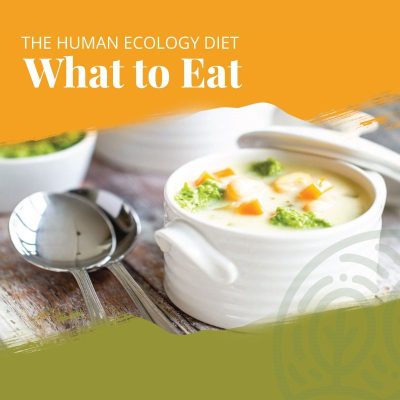
Download our free eBook What To Eat Workbook - The Human Ecology Diet
We are passionate about sharing our work with the world through our Human Ecology Project. Our series of free eBooks will continue to grow over the coming months. Human health drives innovation and better environmental practices in a built environment, which is why we work to create a healthier world.
The focus of nutritional studies has shifted away from food and toward the individual components of food. While that is an interesting study, it has really not informed the debate as to what a healthy diet looks like. What foods do we need in order to get the proper balance of nutrients? It turns out that the answer is not a mystery.
If we look at the leading edge of nutritional science, we see that there is little disagreement. Certainly, there are conflicts with those who stubbornly defend the past, who have a vested interest in a particular product, or who refuse to believe that the foods they love can possibly be harmful; but these arguments are superficial and unimportant. If we apply the considerations in previous posts regarding personal health, social justice, environmental concerns, and ethical considerations, we arrive at the Human Ecology Diet. It is a simple approach and contains all the foods essential for personal, social, and environmental well-being. The ingredients are not “superfoods” packed with powerful and mysterious micronutrients. In fact, a healthy diet is more a fusion of traditional diets from around the world with the simple considerations of ecological and economic realities taken into account.
The food groups listed in our free e-Book are not based exclusively on botanical classifications but, rather, on the groupings that are familiar to a person shopping in a local market.
In good health

The Healthy Choice Is The Easy Choice

Teaching people how to set up their kitchen, home, workplace in a way that makes the healthy choice the easy choice is one of my passions. A wholefood plant based vegan diet brings so many rewards. When you stop eating animal foods, tell everyone why you are taking such a step forward. You will no longer be a customer of animal agriculture that must be stopped if we are to survive as a species. If like us, you have a desire to see a healthy world for all, humans and nonhumans alike, please share our newsletters, videos and free eBooks.
Cook Once Eat Multiple Times
Keep you kitchen stocked with the following wholefoods and create delicious, nutritious meals. I guarantee you will love every bite. This simple and fast curry recipe below can be doubled or tripled allowing you to freeze in portions for your convenience and use.
Getting The Most from Grains
Using whole grains as the foundation of your diet is not only healthy but also economical. Grains can be cooked and stored to be re-used for up to five days. They can be reused as grain “burgers” mixed with vegetables or beans, used in soups and stews, or simply heated and used with a condiment or sauce. Try and have at least one or two servings of grain a day.
Getting The Most from Beans
As with grains, you can store beans for several day in the fridge and recycle them. Many people like beans when recooked better than the first cooking. Soups, stews and casseroles are common ways of using beans. They combine most very well with onions, and other root vegetables as well as the squashes. It is a good idea to have beans, or bean products at least once a day. I also suggest the use miso soup regularly several times a week.
Getting The Most from Vegetables
The key to vegetable consumption is variety. It is the diversity of vegetables that assure the best nutrition. Think in terms of colour. A healthy plate of food usually has a variety of colors. Roots, cruciferous vegetables, leafy greens, squash, and onions – vary with season and local availability but make sure of variety. Have vegetables at least twice a day and make sure to have some raw vegetables daily
Getting The Most from Sea Vegetables
Sea vegetables may be a new food in your kitchen, but you will find them a valuable addition. You don’t need large quantities to have benefit. Most people who are new to using them find using wakame in soups the easiest place to start. A tablespoon a day of cooked sea vegetables is about right.
Getting the Most from Fruits
Do you best to focus on locally grown foods in season. When this is difficult try regional fruits from similar climate. Use fruits that are shipped long distance seldom or not at all. Remember that dried fruits have high sugar content. Most fruit is best eaten raw, but cooking fruit is a healthy option for making fruit compote.
Getting the Most from Seeds and Nuts
Either roasted or raw nuts and seeds are a healthy addition to the diet as a snack or as a garnish. I usually suggest seeds over nuts as a breakfast garnish for porridge and Pumpkin and Sunflower seeds as a snack item. In our house we usually only use nuts in dessert items.
Red Lentil Coconut Curry
This warming curry in the South Indian style is flavoured with aromatic fresh ginger, cumin and coriander. It’s made extra creamy and luscious thanks to the addition of organic coconut cream. Serve the curry with white or brown basmati rice to round out this comforting meal.
3 shallots, finely chopped
1 tbsp fresh ginger, peeled and minced
2 cloves garlic, minced
1 tsp cumin seeds
1 tsp mild curry powder
½ tsp ground coriander
½ tsp turmeric
Pinch sea salt
2 cups filtered water
1½ cups red lentils
1 cup organic coconut cream
2 medium-sized courgettes, diced into ½ inch (1 cm) pieces
1 or 2 tbsp tamari
1 cup loosely packed fresh coriander leaves, chopped
Lime slices
In a heavy-based pan, cook the shallots, ginger and garlic in a splash of filtered water for 5 minutes, stirring occasionally. Add the spices and salt and stir well. Stir in the water, lentils and coconut milk. Allow the mixture to simmer over a low flame, covered, whilst stirring occasionally for 10 minutes. Stir in the courgette and tamari, cover and cook until courgette and lentils are tender. Add more water to reach the desired consistency. Taste-test then stir in the coriander. Makes 4–6 servings.
If you have a busy social life, you can find healthy vegan options in almost every restaurant.
In good health

Seasonal Food Energetics
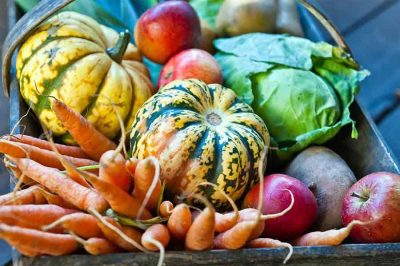
Seasonal cycles, shifts in the weather, and even the move from night into day are not external artefacts. The environment is in constant flux, and we are in flux with it. In the animal kingdom this shows in cycles of fertility, migration and many aspects of behaviour. These shifts in the environment have influenced human activities, physical and cultural, for millions of years. Our bodies still dance to the rhythm of natural change. Our teaching of Macrobiotics is built around the simple insight that learning to cooperate to natural cycles is productive of health. It is a plant-based diet, with non-perishable foods such as whole grains and beans at the foundation that are the hope for the future.
Macrobiotic nutrition advocates regional and seasonal eating to reduce food waste, and to lower the environmental effect of food transportation, both serious issues in the discussion of food choices. The world of international food distribution is topsy-turvy, costly and wasteful - but profitable. Cod, caught off Norway, is filleted in China, then shipped back to Norway for sale. Argentine lemons fill supermarket shelves on the Citrus Coast of Spain, while local lemons rot on the ground.
International trade agreements mean that fuel for international sea and air freight is not taxed. Cheap slave labor in Africa provides greenhouse salad and vegetables to Europe, at far lower costs than local produce. As competition for food becomes more relevant, so does the issue of local and regional food security. Cheap labour in poor countries not only entails shockingly high 'food miles', but undermines local, sustainable agriculture. The cheap labour pay-out, rather than providing security to the host nations, makes them even more dependent on single export crops. This is Corporate Colonialism.
Eat local produce
According to the consumer group Sustainable America, the average food miles for a watermelon is 1,886, they travel from Mexico, Kiwi fruit is 5,015, coming from Chile, and pears from Argentina clock in 5160 miles. Groups like Sustainable America have advocated labeling to tell consumers how far a product travelled to its final destination. Perishable fruits and vegetables arrive out of the natural season, and their nutrient levels start to diminish as soon as they are harvested. The industry constantly resists moves to require the seller to provide air miles and environmental footprint information.
Fruits and vegetables continue to 'breathe' after they are picked. This process, called respiration, breaks down carbohydrates, proteins and fats, and leads to loss of food value, flavour and nutrients. Dry or warm conditions can accelerate the nutrient loss. Vegetables such as asparagus, broccoli, mushrooms, peas and sweet corn have a very high respiration rate and will lose nutrition and flavour more quickly than apples, garlic or onions, all of which have low respiration rates.
The longer the period of respiration before consumption, the more nutrient loss there will be. Eating a seasonal diet certainly makes economic and environmental sense, but there are other nutritional reasons we might want to eat with the seasons. The body has some secrets we aren’t usually aware of.
Adapt to your environment
The environment can profoundly influence changes in human gene expression. Our genes shift quite dramatically with seasonal changes. These shifts affect up to 25% of the genetic code that influences our physical behaviour, especially the immune system and the inflammatory response. It shows how much our body strives to create a balance with natural process.
The changes in gene expression allow us to adapt better to changes in temperature or other seasonal challenges.
We know that seasonal eating helps cut down on wasteful food transport and supports local agriculture, but it could also have a direct effect on our health. If the body adapts to the season, then the foods traditionally eaten at that time of year may well be of assistance in creating harmony with that change. Homo Sapiens have walked the earth for about 200,000 years – that means that 10,000 generations of human life have experienced the change of seasons, that cycle is built into us.
Environment and lifestyle influence many complex diseases. Cardiovascular autoimmune, infectious disease and psychiatric illnesses all have seasonal patterns. Scientists are now investigating how our particular environment may be 'seeding' our gut biome
Wholefood plant-based diet
Seasonal eating has been a hallmark of macrobiotic dietary practice. The foods that are seasonally most plentiful have specific benefits to our body's seasonal needs. They help bring us into harmony with the environment, a harmony our body still craves after centuries of experience.
Generally, we find that foods harvested in the autumn are less perishable and can be safely stored during the winter. They hold their nutritional value during the time of year when there is less seasonal growth. They are warming foods; some are known as thermogenic, because they initiate a biochemical reaction that produces heat. The increase in caloric energy from vegetable carbohydrate is not dramatically rapid, but the result lasts longer. Beans, grains and root vegetables are excellent thermogenic foods for cold weather. Food combinations and cooking can either increase or decrease thermogenic qualities.
For centuries, both western and eastern cultures have recognized several spices (particularly ginger) and carbohydrate-dense foods as warming, although experiments generally focus on using thermogenic foods in weight loss.
We harvest cereal grains and beans in the autumn, and use them more regularly in colder months (although they can be used year-round). Slower growing root vegetables, such as carrots, onions, parsnips and sweet potatoes, also release energy slowly. My grandmother served porridge in winter; she said it would warm me all day because “it sticks to your ribs”. In hot weather we naturally choose cooling foods, such as the first greens and early fruits. Foods with higher water content like melons, celery, radishes, cucumber, lettuce and other salad greens are relaxing and hydrating, and are more valuable in hot weather.
Ancient wisdom
The modern diet constantly undermines the innate intelligence of the body. I was in Helsinki many years ago, and the temperature was below zero. Near my hotel was a supermarket, always a good place to discover what people really eat. Just inside the doors was a huge pyramid of pineapples with a plastic palm tree. A sign on the palm tree said 'The tropics come to Helsinki'. Sadly, the tropics were not in Helsinki: no matter how fertile your imagination or how efficient your heating system, nature was in deep winter.
When we eat excessively warming foods (fatty foods, protein) in summer, we crave extreme and immediate cooling. Our body suffers the consequences, struggling to adjust to our indiscriminate choices. Foods like ice cream and ice cold drinks become the norm. Moving back into harmony with nature is a practical process; cooperation with the natural order makes sense. It's how our bodies are made.
A study in Japan discovered significant differences between the vitamin content of summer-harvested and winter-harvested spinach.More sun exposure means more antioxidants in the plant. This makes sense: antioxidants protect the plant from oxidative damage that the sun can cause. Drought and pathogens also change antioxidant levels. In Chinese medicine the changes in the vegetal growth provided a specific balance for the macro-effects of the season. The season produces the foods that perfectly balance our needs.
Choosing local, seasonal foods builds a link between us and the environment, and integrates us into our world. The two golden rules are: eat as close to home as possible, and try and eat seasonal foods. This quote, attributed to Japanese naturalist and philosopher, Kaibara Ekken, “Soil and man are not separate”, sums up the macro-effect of eating within the local environment.
In good health

[1] Environmental Cost of Shipping Groceries Around the World, Elisabeth Rosenthal, New York Times, April 26, 2008
[2] Shah NS, Nath N. Minimally processed fruits and vegetables - Freshness with convenience. J Food Sci Tech. 2006; 43 (6): 561–570.
[3] Goldman IL, Kader AA, Heintz C. Influence of production, handling, and storage on phytonutrient content of food. Nutr Rev. 1999; S46–S52.
[5] Widespread Seasonal Gene Expression Reveals Annual Differences In Human Immunity And Physiology, Simone De Jong, Marjolein Neeleman, Jurjen J Luykx, et al - Nature Communications, Article 7000, May 2015
[6] Seasonal Changes In Gene Expression Represent Cell-Type Composition In Whole Blood, Simone De Jong, Marjolein Neeleman, Jurjen J Luykx, Aaarten J. Ten Berg, et al. – Oxford Journal, Human Molecular Genetics, Dec. 2013
[7] Widespread Seasonal Gene Expression Reveals Annual Differences In Human Immunity And Physiology - Xaquin Castro Dopico, Marina Evangelou, Ricardo C. Ferreira, Hui Guo, Marcin L. Pekalski, Deborah J. Smyth, Nicholas Cooper, Oliver S. Burren, Anthony J. Fulford, Branwen J. Hennig, Andrew M. Prentice, Anette-G. Ziegler, Ezio Bonifacio, Chris Wallace & John A. Todd - Nature Communications 6, Published 12 May 2015
[8] Pell, J. P. & Cobbe, S. M. Seasonal variations in coronary heart disease. QJM 92, 689–696 (1999).
[9] Iikuni, N. et al. What's in season for rheumatoid arthritis patients? Seasonal fluctuations in disease activity. Rheumatology 46, 846–848 (2007)
[10] Fisman, D. N. Seasonality of infectious diseases. Annu. Rev. Public Health 28, 127–143 (2007).
[11] Rosenthal, N. E. et al. Seasonal affective disorder. A description of the syndrome and preliminary findings with light therapy. Arch. Gen. Psychiatry 41, 72–80 (1984).
[12] Owens, N. & McGorry, P. D. Seasonality of symptom onset in first-episode schizophrenia. Psychol. Med. 33, 163–167 (2003).
[13] Among Trillions of Microbes in the Gut, a Few Are Special, Scientific American, July 2015
[14] Mikkelsen, PB et al. “Effect of fat-reduced diets on 24-h energy expenditure: comparisons between animal protein, vegetable protein, and carbohydrate” American Journal of Clinical Nutrition. 2007
[15] See more information in the recipe and cooking section of the MACRVegan pages.
[16] Igarashi O. The Significance of the Issuance of the 5th Revision of the Japanese Standard Tables of Food Components on Study and Research on Vitamins and Diseases. 36th Vitamin Information Center Press Seminar. Tokyo, Japan. 2001.
[17] Magkos F, Arvaniti F, Zampelas A. Organic food: Nutrititious food or food for thought? A review of the evidence. Int J Food Sci Nutr. 2003 Sep;54(5):357-71. Review.
[18] Kaibara Ekken 1630 –1714) or Ekiken, also known as Atsunobu. Japanese Neo-Confucianist philosopher and botanist.
Soups Cooklet - 10 Delicious Recipes
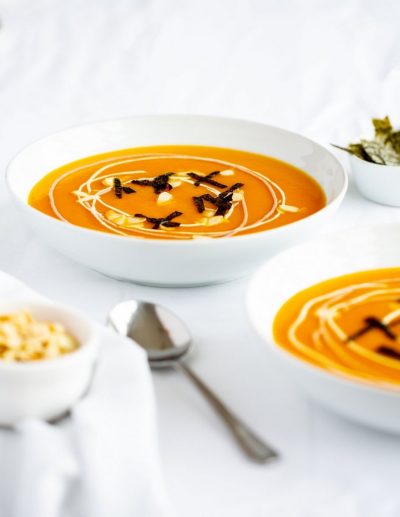
Food historians tell us the history of soup is probably as old as the history of cooking. The act of combining various ingredients in a pot to create a nutritious, filling, simple to make meal was inevitable. Healthy and healing soups are part of the cooking traditions in every country. Download our free Human Ecology Project Soups Cooklet
Try and prepare your soup from fresh, organic, in season, and ideally local ingredients. Whether your ingredients are coming freshly grown from your own garden or you’ve bought them directly from the farmers’ market, making the connection between the food you eat and your local environment is important. The food we eat is part of our cultural identity. Eating local foods helps produce a more resilient and sustainable future, both for yourself and for future generations.
Cook up batches of your favourite soups from the Cooklet and freeze in portion sizes. You have a plethora of simple creamed soups or more intense bean type stews to choose from. All of them are very affordable even on a low budget. You can add some grains to the bean soups, or serve all of them with fresh salad or steamed greens. Soup, can in fact be a meal in and of itself.
Enjoy good health daily.

Freedom From Cravings
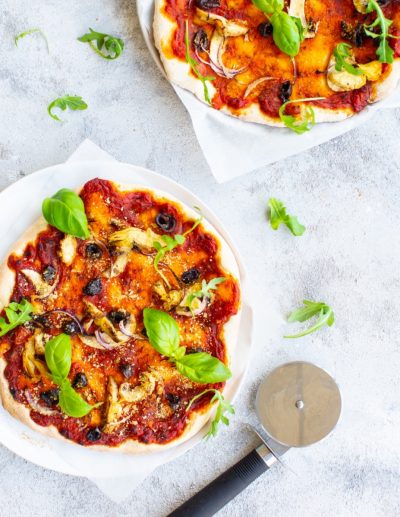
Download our Free eBook here Freedom from Cravings
According to the U. S. Food and Drug Administration, Americans spent an estimated $30 billion a year in 1992 (the last major study) on all types of diet programmes and products, including diet foods and drinks. Market data, a market research firm that has tracked diet products and programmes since 1989 estimates that the figure in America has now reached over $60 Billion. Weight loss is big business. Every few months a new diet plan is launched but they must not be working since the business is growing rather than shrinking (just like the waistlines).
Originally this interest has been for cosmetic reasons, with everyone wanting to look like a fashion model or to get into last year’s swim suit. But the larger issues of health are gaining increased attention. Excess weight gain and obesity are very real health problems. Excess weight is a precursor to so many other serious health issues, from diabetes and heart disease to some cancers.
Because this is a serious health issue we need to understand why the programmes, the pills and the products don’t seem to provide consistent and sustainable results. Download the free e-Book and read what I have found out:
In good health

Food & Environment

The Missing Link
In the past, cultures have created environmental chaos and suffered from it. Throughout history, we humans have created uninhabitable environments. Author Jared Diamond---who won the Pulitzer Prize for his book Guns, Germs, and Steel---has written about this in his most recent book, Collapse. He focuses on several cultures that have created their own downfall by causing environmental changes. Among them are the Mayans, the Anasazi of the American Southwest, and the Easter Islanders. These were all thriving cultures that destroyed the natural ecosystem to the degree that it could no longer support human life. The most profound result in these situations was the impact on the food supply. We need to learn from the past.
Our modern world is dependent on the international movement of food. Human society has never collapsed on a global scale, but then we haven’t had the physical or chemical technology to make that happen until now. We cannot discuss nutrition without addressing the quality and quantity of a diverse selection of food. If quality food is not available all other discussion is futile.
Over the past ten thousand years, human societies have dramatically changed the environment. The changes were mostly unintended and largely unnoticed since they were so slow that they spanned generations. Now we can clearly see the human impact and have the opportunity to change course if we wish. Human culture has made forests disappear, changed the courses of rivers, altered the atmosphere, and changed the composition of the seas.
Environmental Damage
Our attitudes to food are a significant part of this process. Many of our foods are extraordinarily destructive to the environment and are not nutritious. People are often attracted to products that promise specific nutritional benefits without regard to their environmental damage. In some cases we are focused on imagined benefits of products with only small or even no real nutritional benefit. There are unintended consequences to our limited thinking.
Soya foods, for example, have been popular animal-protein substitutes since the 1970s. This is because of their high protein content, but they have questionable benefits in the way they have been used. By focusing on the protein alone, no attention was paid to the fact that soya, on its own, is not easy to digest. In Asia, soya was almost always fermented or processed in ways that improved digestion. Products---such as miso paste, soya sauce, and tempeh---are processed in a way that increases digestibility and makes the protein more bioavailable. These foods are a valuable addition to the diet but only when processed in a healthy manner.
Some environmentalists criticize the growing of soy due to the impact of soya farming. They claim that soy bean growing is one of the major reasons for cutting down tropical forests. The expansion of soy plantations into forests is contributing to climate change. Deforestation is responsible for about 15% of all the global greenhouse gas emissions caused by people. Conversion of forests to soy plantations in the Amazon particularly threatens the climate. The problem stems from the continued hunger for meat. Ninety-eight percent of the soy beans grown are fed to animals and only 1% is used for human consumption.
Of the soy that is intended for human use, an increasing amount is for use in imitation replacement items mostly “meat and dairy substitutes” made of soy. The use of these products misses the point of eating a healthy WFPB diet. These items are a nutritional train wreck. Artificial “meaty” tasting products made with expeller-pressed canola oil, refined coconut oil, water, yeast extract, maltodextrin, natural flavours, gum Arabic and excessive amounts of salt are unhealthy commercial products. The only real focus in them is the bottom line profitability, not human health.
Another example is palm oil. It has become the go-to butter replacement for vegan products. Manufacturers use it in products like ice cream, margarine, instant noodles, cosmetics, soaps, and of course, cookies. Many products do not list palm oil but simply call it vegetable oil. Recently, in a local natural foods store in Spain, I started to read labels in a long aisle of crackers and cookies. I avoid refined sugars, so the rejects were adding up fast; but what astonished me was that every product included palm oil. There are no exclusive health benefits in using this oil it is used simply to produce a specific “mouth feel”.
Destruction Of The Rain Forest
Increased demand for palm oil is causing extensive environmental destruction in Southeast Asia. About 90 percent of the palm oil used in the world is being produced in Malaysia and Indonesia. Indonesian plantations alone cover an area the size of the state of Maine, and the area is expanding yearly. The United Nations Environment Program states that “palm oil plantations are currently the leading cause of rain forest destruction in Malaysia and Indonesia.” In addition, The United Nations Environment Program found that the Sumatran orangutan, a critically endangered species, is in very high risk of extinction in the wild as a result of logging and plantation development. We are killing these beautiful animals so that we can have cheap cosmetics and cookies. The orangutan population has fallen by about 91 percent during the last few decades.
Official Indonesian data reveal that illegal logging has recently taken place in 37 of 41 surveyed national parks in Indonesia, some also seriously affected by mining and palm oil plantation development. Satellite imagery from 2006 document beyond any doubt that protected areas important for orangutans are being deforested. The use of bribery or armed force by logging companies is commonly reported, and park rangers have insufficient numbers, arms, equipment, and training to cope.
The food industry does not want us thinking about the environmental impact of our diet any more than they want us knowing what’s in it. The Dietary Guidelines for America have always shown the power of the big business to dictate government policy on nutrition. From its inception the food industry has always called the shots.
There is concern that the advisory committee for the 2015 Dietary Guidelines for Americans was considering issues outside of the nutritional focus of the panel. The advisory committee was showing an interest in incorporating agriculture production practices and environmental factors into their criteria for establishing the next dietary recommendations. The food industry was adamant that the advisory committee focused on nutrient and dietary recommendations based upon sound nutrition science. Big food does not want people to consider food as nothing more than a chemical delivery system. They did not want the public distracted by “extraneous factors”.
The extraneous factors were, of course, environmental impact. In testimony before the advisory committee for the 2015 Dietary Guidelines, Miriam Nelson, a Tufts University professor, said, “In general, a dietary pattern that is higher in plant-based foods and lower in animal-based foods is more health-promoting and is associated with less environmental impact.” The industry wants us to think that environmental concerns are not nutritional. I disagree. Nutrition is the study of how we relate to our environment through our choices of food and how those choices affect both internal and external health.
Nutritional Standards & Ecology
Scientific concerns regarding the environmental impact of food choices have been kept outside the public eye. The industry concerns that the Dietary Guidelines Advisory Committee “is showing an interest in incorporating agriculture production practices and environmental factors” into their recommendations was the kiss of death. In the next revision of the guidelines, it directed the Obama administration to ignore such factors. The food industry will continue to press their cause with vigor---and cash. A myopic view of nutrition, where food is reduced to biological “nutrient delivery systems” suits the food industry to perfection. It distances food from the environment and sees food as an industrial product not a natural requirement for life and health such as water and air.
The modern consumer enjoys low prices and apparent choice, through the scavenging of environmental resources and cheap labor. This wasteful, exploitive system undermines environmental sustainability and food security for us all. As local soil resources diminish, reliance on chemical fertilizers deepens. The resulting expense drives smaller farmers out of business and reduces biodiversity. This is the true costof our present system and is not reflected in the price of the food. To discover the true cost of food, the environmental damage needs to be factored in as well as the direct and indirect subsidies and related health costs. The purchasing habits in the wealthier nations are bankrupting the economies and environments of developing nations. The FAO (Food and Agriculture Organization) states:
“Modernization of agriculture has not equally benefited consumers and farmers in the world: rather it has generated winners and losers. . . . The exchange value of food does not take into account the real cost of such systems, so that conspicuous and unreflective consumption is the driver of social and environmental inequality.”
The “unreflective consumption” is a result of being uneducated around how food is produced globally. If we are not educated, how can we make sensible decisions? If schools accept sponsorship from fast-food companies and allow junk food to rule the vending machines, how are children to know? We should promote “food literacy” in school and at home.
Food Knowledge
Many children think of food simply as manufactured goods. A recent British study of 1,000 school children aged between 5 and 11 showed some very strange ideas about the origins of their food. Only one out of every three (33 percent) knew that pork comes from pigs . . . and 4 percent thought that pigs were the source of potatoes. Three in ten (28 percent) did not know that carrots grow underground. When I have spoken in some schools, the level of disconnect between what is eaten and where it comes from is seriously distorted. I have heard that food is “yucky” if it was grown in dirt and that it is “made at the store” or “in a factory.” (These last statements, sadly, ring true.) And yet the young are interested in the state of the environment. They simply don’t connect it with food.
In a recent UK study, it was found that 82 percent of youngsters aged 7 to 14 rated learning about green issues as very important, putting it ahead of science, history, IT, and art. Around 62 percent wanted to learn more about wildlife and nature, and 47 percent want to learn more about where food comes from. Almost all the children were worried about people damaging the planet. An American poll with a sample of 500 preteens showed that 56 percent felt that the world would be irrevocably damaged by the time they grew up. To help, we can educate children to avert and repair environmental damage. The connection between food and the environment is a practical place to start.
Mother Nature Fights Back
When any organism (in this case, man) offends the natural order, there is an account to be settled. This is not a moral directive from an angry god; this is simple cause and effect. When we eat as if life matters, we honour all relationships between animals, soil, plants, the ocean and the air, and ourselves.
It is difficult to point to the exact moment when we began our steady pull away from knowing about our food. The growth of urban areas and the domination of urban culture happened slowly over several decades. The mass marketing of our food and the erasure of seasonal or regional eating has moved us into a nutritional grey zone. The food in Amsterdam and the food in St Louis begins to look, smell, and taste the same. It is a dream come true for the food industry.
All this has happened at the expense of the soil we depend on. As industrialized agriculture grows it continues to leave destruction in its wake. Rivers, aquafers, and lakes become bereft of life and simply toxic dumps for the chemical waste of disastrous farming. The damage is not only done to the soil but to those who work on it.
It is the simplicity of a Whole foods vegan diet that is based on grains, beans, vegetable, nuts, seeds and fruits that holds the future for our personal, social and environmental health. Connecting the dots between the ethical, environmental and health implications of what we eat needs to be the focus of our education towards an enlightened approach to nutrition. Otherwise we may suffer the same fate as that ancient Mayans and Easter Islanders but on a much grander scale than ever imagined.
In good health

Desserts Cooklet - 10 Delicious Recipes
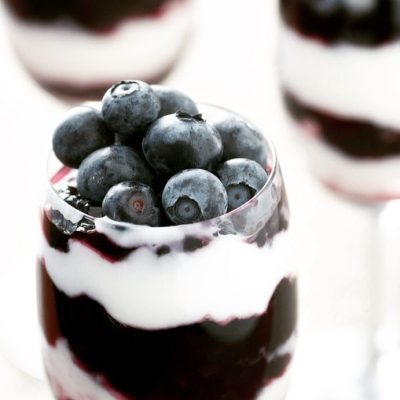
Who says you can’t have your cake and eat it? Not me. Download our free Human Ecology Desserts Cooklet
Welcome to the world of guilt free desserts! All the recipes you will find in this Cooklet have passed the test with discerning dessert aficionados. Most people are seekers of sugar. The ‘sweet’ taste receptor is right there on the tip of the tongue and cries out for satisfaction. I want to show you how to satisfy this craving with healthy treats.
These desserts use only natural organic ingredients and have great nutritional value. Some of the recipes are for every day enjoyment, such as the applesauce, the kanten or a few nuggets, others are for special occasions. The day to day recipes are doable even on a low budget. I personally like the simple apple and pear desserts but when we have family and friends for dinner it is great to make something special
I only use organic fair trade ingredients that are kind to the soil, the planet and do not involve food slavery. Please be conscious of where your ingredients come from.
Enjoy good health daily.

Conquer Your Kitchen
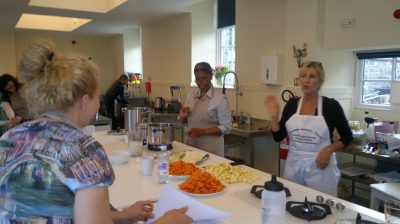
The kitchen cupboard is the nerve centre of your kitchen – keep it well stocked and you will save time dashing to the shops for that single ingredient, and will always have a delicious meal at hand even when the fridge is looking bare. Here are some of my top tips to make your kitchen work for you.
Tasty dressings
You can make delicious sauces and dressings and wonderful-tasting dips using all-natural ingredients that incorporate the five tastes. Toasted sesame tahini, umeboshi plums, brown rice syrup and barley malt, shoyu, sweet white miso, fresh ginger juice, lemon juice, and tofu, the possibilities are endless. All of these delicious dressings can be used on salads, boiled vegetables, noodles or pasta, and sea vegetables. Many of them can be stored in the fridge for up to five days.
Quick bites and roll-overs – cook once, eat twice
Time savers are a great way to cook your food. Cook double and use the rest for tomorrow’s lunch. Cook more than you need and freeze the rest. A good idea is to freeze in small portions, so you have ‘ready-made’ meals when time is of the essence.
- Make a weekly menu plan – it makes it possible to use leftovers efficiently and makes meal preparation simpler.
- Make double the sauce and use for another dish later in the week.
- Salad dressings are easy to prepare in larger batches. Depending on the dressing, it will keep for at least a week, although some can be stored for a month or longer. Dressings are versatile and can be used not only on salads but to also dress up simple vegetable and grain dishes and add a quick boost of flavour.
- Cut enough fresh vegetables for several days and store in an airtight container so that all the cutting is done and you can cook quickly.
- Peel and chop carrots, onions, etc., bag them and freeze. When needed, just take out as much as you require and reseal. Not perfect, but helpful.
- Mince fresh garlic and keep it in the refrigerator for ready use. Minced garlic will keep for about two weeks in the refrigerator in a sealed container.
- Juice several fresh lemons or limes at a time and store the unused juice in the refrigerator in a sealed container. This will save time when putting together salads, dressings and other recipes. Fresh lemon juice will keep for about ten days.
- Beans will last three days in the refrigerator after being cooked. Cook enough beans to use in a soup, stew or casserole. I cook up batches of adzuki beans and freeze them in portions.
- Grains will last up to five days in a sealed glass container in the refrigerator. I make our short-grain brown rice porridge for breakfast in one batch that lasts us through the working week. I simply warm the required amount each morning for breakfast by adding some water (you could use a rice milk). Grains and beans are good to reuse with a nut or seed garnish, but make the vegetables fresh.
- Prepare larger amounts of brown rice, beans and other longer-cooking foods and freeze them in small portions so they will defrost more quickly when you need them and will be the right amount required for the number of people you are serving.
- Learn how to use a pressure cooker, crockpot or slow cooker. Pressure cooking can cut standard cooking times by about two-thirds, while preserving more nutrients than conventional cooking methods.
- Purchase some good organic soup stock cubes. I use umami instant stock sachets that instantly deliver a delicious base for all my soups, stews, risottos, pies and even stroganoffs.
- Sea-vegetable dishes last for days. Cook up a good amount and then use a small portion every other day. I switch between, arame, hijiki and nori.
- Always have some wholegrain pasta (brown rice pasta is good), bulgur, couscous and other partially refined grains at hand for last-minute meals.
- Have a stock of shop-bought organic cooked beans and other foods on hand for when you get stuck.
- Choose two new recipes from your cookbooks every week so that you are constantly expanding you range of dishes and your familiarity with the foods.
- Adding some raw vegetables or sprouts to each meal is a winner and it’s simple as no cooking is required!
Replacements
There are some foods commonly used in cooking that we avoid for health or ethical reasons. You can be creative and use replacements that will give you the tasty results you expect. Most of them have to do with recreating the ‘mouth feel’ of another food. You will be pleasantly surprised with your results.
Replacing eggs
1 egg = 1/4 cup puréed pumpkin
1 egg = 1/4 cup puréed prunes
1 egg = 1/2 mashed banana
1 egg = 1/4 cup silken tofu, blended
Replacing fats and oils
1 cup oil = 1/2 cup apple sauce or pumpkin purée
1 cup butter =3/4 cup pumpkin purée
Replacing milk
Oat milk
Soy milk
Rice milk
Cheese flavours
Nutritional yeast
Nut-based cheese
Replacing sugar
1 cup sugar = 1 cup apple sauce or banana purée
1 cup sugar = ¾ cup puréed dates
Other sweeteners
Fruit purée
Balsamic glaze
Banana purée
Real fruit jam
Fruit preserves
Dried fruits
Barley malt
Rice syrup
Maple syrup
For sautéing use filtered water or vegetable broth, and for roasting vegetables, if you cook them slow at a low temperature they will brown beautifully. I often mist the vegetables I am roasting with a water spritzer and then add some sea salt and my favourite herbs. Always line the roasting pan with parchment paper to avoid the vegetables sticking. For deep frying there are many alternatives, an air fryer being one of them – crispy foods but without the artery-clogging oils.
In good heath


